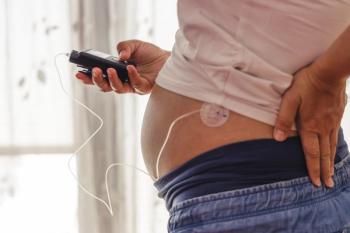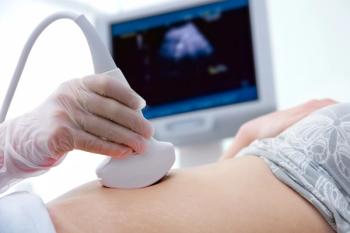Takeaways
- Keep it simple. FOCUS requires only a Foley catheter, suction tubing, suction source and saline—equipment found in any delivery room or emergency department.
- Think beyond term PPH. This method is viable for abortion-related hemorrhage or delayed hemorrhage when the uterus is too small for a JADA.
- Start with 80 mmHg suction, increasing incrementally if needed.
- Combine it with uterotonics for synergistic effects.
- Antibiotics are suggested (e.g., IV azithromycin + cefazolin postpartum; oral doxycycline post-abortion) particularly post-abortion or miscarriage.
Introduction
Postpartum hemorrhage (PPH) remains a leading cause of maternal morbidity and mortality worldwide, particularly in resource-limited settings.1 Uterine atony—the inability of the uterus to contract after delivery—is the most common cause. This type of hemorrhage most commonly occurs in the immediate postpartum period but can also happen days to weeks later during uterine involution, or after either a spontaneous or induced abortion.3 While several interventions exist, including uterotonics, balloon tamponade, and surgical techniques, access to specialized devices is often limited and may not always be the most suitable for every situation.4
Now, a novel approach using a Foley catheter for uterine suction (FOCUS) is emerging as a simple, effective, and widely accessible solution. Recent publications, including a 2025 report in the American Journal of Obstetrics and Gynecology and a case series in Contraception, demonstrate its success in controlling hemorrhage across different gestational ages and clinical scenarios—even in cases where traditional devices are unsuitable or unavailable.5,6
The problem: Limitations in current hemorrhage management
Standard treatments for PPH include:
- Uterotonics (oxytocin, misoprostol, carboprost, methylergometrine)
- Balloon tamponade (Bakri, Ebb, etc.)
- Uterine suction (JADA System)
- Surgical interventions (uterine artery ligation, hysterectomy)
However, challenges persist:
- FDA-approved vacuum devices (e.g., JADA System) are only approved for immediate postpartum use with a dilated cervix.7
- While balloon tamponade applies outward pressure. Vacuum-induced uterine tamponade with suction however can enhance physiologic uterine contraction.8
- Cost and availability restrict access in low-resource settings.9
The solution: Foley catheter for uterine suction (FOCUS)
The FOCUS technique repurposes a standard Foley catheter—a ubiquitous, low-cost tool—to create vacuum-induced tamponade. Here’s how it works:
Step-by-step application
- Clear the uterine cavity of clots or retained tissue.
- Insert a Foley catheter (size adjusted for uterine volume, e.g., 16–24F).
- Inflate the balloon (e.g., 30–35 mL saline) past the internal os to anchor it.
- Connect to suction, begin at 80 mmHg and increase as needed up to a maximum of 525 mmHg, via standard tubing. (Figure 1)
- Maintain for 1–24 hours, with IV antibiotics (azithromycin + cefazolin for postpartum; doxycycline for post-abortion.)7, 10, 11
Why it works
- Negative pressure promotes uterine contraction.5,6,8
- Widely available—Foley catheters are found in nearly all obstetric settings.
- Versatile—effective in postpartum hemorrhage, post-abortion bleeding, and even with Müllerian anomalies.
Clinical evidence: Case reports and outcomes
Case 1: Second-trimester D&E with coagulopathy5
- Patient: 34-year-old with fetal demise at 18 weeks and dysfibrinogenemia.
- Bleeding persisted despite evacuation and uterotonics.
- FOCUS applied: Bleeding controlled, blood loss after use of suction 50 mL.
- Outcome: Stable discharge on postoperative day 2.
Case 2: Delayed postpartum hemorrhage after cesarean5
- Patient: 33-year-old postoperative day 6 after prelabor cesarean with severe anemia and retained clots.
- Failed conventional management (uterotonics, D&C).
- FOCUS applied: Bleeding controlled within minutes, blood loss after use of suction <10 mL.
Key findings from studies
- Rapid hemorrhage control (often within 5 minutes).
- No device failures or complications in reported cases to date.5,6
- Cost-effective compared to specialized devices.
Table. Why FOCUS Stands Out
Cervical dilation needed?
Conclusion
The FOCUS technique exemplifies practical innovation—combining two routine instruments into a life-saving intervention. As maternal hemorrhage remains a global crisis, this approach could be particularly transformative in low-resource settings, where access to expensive devices is limited.1,5,6,9 Additionally, FOCUS enables vacuum-induced hemorrhage control, which has proven especially effective not only in traditional postpartum hemorrhage8 but also in new cases of delayed postpartum hemorrhage, cesarean deliveries with a closed cervix, and post-abortion bleeding.
For more details, including videos, multilingual printer-friendly instructions, and a patient registry, visit: www.focuspph.com.
















